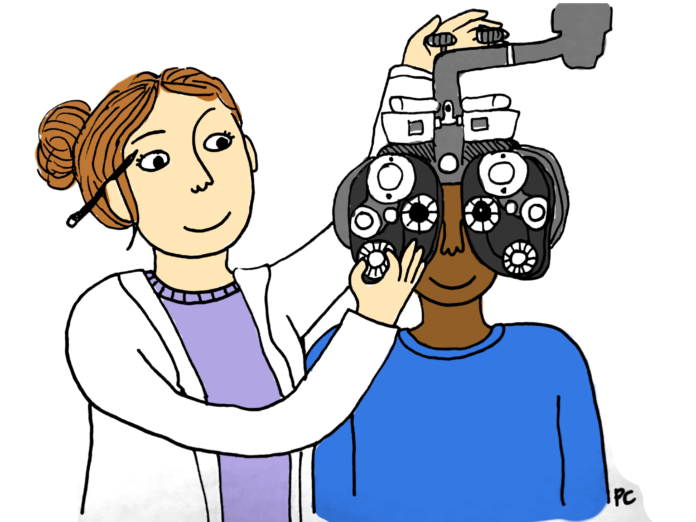As our gateways to the world, the function of the human eye is a fascinating topic worth exploring. Our eyes work overtime to process heaps of information, both consciously and subconsciously. They allow us to detect danger, appreciate a piece of artwork, and make awkward eye contact on a crowded bus.
Yet, we largely overlook the value of our eyes—that is, until we notice an undesirable change in them.
Optometrists recommend routine eye exams to detect changes early on, and prevent serious conditions from wreaking havoc on our eyesight.
Here are a few (hopefully) compelling reasons to squeeze these important appointments into our busy schedules:
Detecting systemic health conditions
Since they can cause related eye diseases, general health conditions like diabetes and hypertension can be initially spotted during an eye exam.
Irregular bends to the blood vessels on the retina, the light sensitive layer at the back of the eye, could indicate high blood pressure. The increase in pressure disturbs the eye’s blood supply, and can lead to retinal damage and changes to our vision.
Similarly, diabetic retinopathy is a condition where high blood sugar damages the retina’s blood vessels. Even a tumor or meningitis, inflammation of the membranes surrounding the brain, can be detected through a routine eye exam. Inflammation could cause changes to the way our pupils react. Depending on its location, a tumor could lead to pressure on the optic nerves, which relay information from the eyes to the brain.
Catching and treating eye disease early on
We often assume that eye diseases only develop with old age. Although this may be true for many conditions, it’s not always the case.
Strabismus, the term for misaligned eyes, could make an unsought debut at any time. If left untreated in children, it may cause lazy eye which can result in vision loss. Additionally, holes and tears on the retina are common among young and middle-aged adults.
Since many eye conditions have a genetic component, young children may be at risk. If they experience issues early on, children don’t always express concern. They may be unaware of their vision problems or colour deficiencies until the issue is revealed during an eye exam. Also, children with a speech disorder or individuals with certain cognitive deficits may be unable to express any concerns.
Many of us only visit an optometrist when we notice a change in our vision and require a new prescription—or when our favorite Tiffany frames are on sale. But as you may have guessed, it’s recommended to venture out to your routine eye exams regardless.
Some eye abnormalities tread in silence, especially in their initial stages. Retinal holes and tears, mainly if they occur in the outer edges of the retina, can have no symptoms. Once detected, an ophthalmologist can prescribe a simple laser treatment to prevent retinal detachment, a much more serious condition.
Some severe cases of dry eye may also lack any obvious symptoms, and can be mistaken for allergies or just a symptom of fatigue. But if left untreated, dry eye could increase the risk of infection and scratches on the cornea, the transparent layer of the eye that bends incoming light.
Fun facts
Now for some riveting facts about these multifunctional—and underappreciated—organs:
- Some animals, including octopuses and goats, have rectangular pupils. This cutting-edge feature improves their depth-perception and allows them to effectively evade predators—most of the time, anyway.
- The retina is derived from brain tissue, making it the only part of the brain directly visible to the outside world.
- Despite all the wailing, babies actually don’t produce any tears until they’re at least a few weeks old. They initially produce just enough moisture to coat their eyes.
On the ladder of organ complexity, the eyes are often placed second—only after the entire brain. So—alongside a generous serving of carrots—make friends with your optometrist and make it a habit to look after your favourite duo.
Graphic by Paloma Callo






